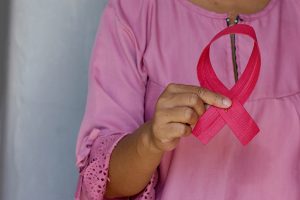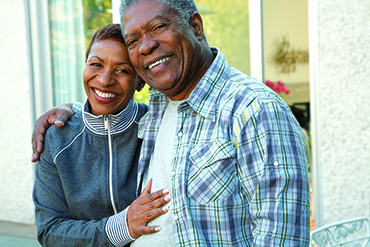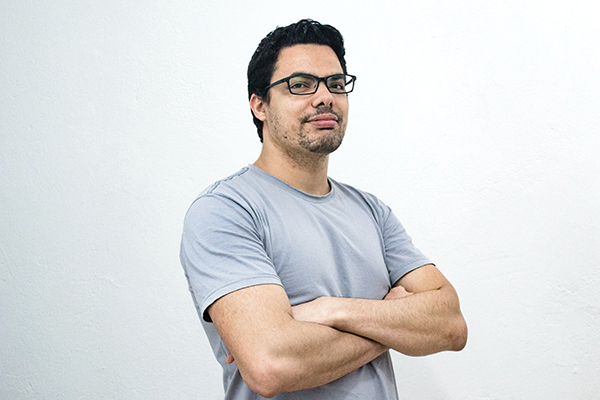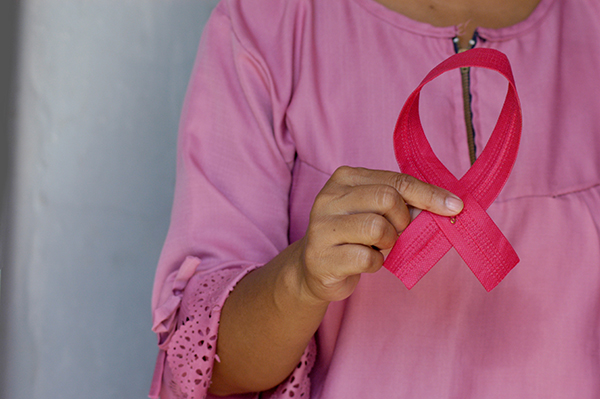Better with Age

PacMed expert gives insight on healthy aging
It’s no secret that getting older isn’t quite what younger versions of ourselves hoped it to be. As years pass, bedtimes are traded for backaches; summer vacations are forfeited for overtime; and the youthful, spritely mentality we once took for granted wanes as our age makes the steady numerical climb. Fortunately, there is a silver (pun intended) lining to aging — it’s entirely possible to live a fruitful life by being steadfast in the pursuit of health. Like a fine wine, it is possible for people to get better with age. Pacific Medical Centers’ Family Practice Physician Dr. Priyanka Naik, DO, is here to explain how this is possible.
Aging is inevitable, naturally. Although changes to the mind and body are par for the course, what steps can people take to ensure longevity and long-term health?
It’s important to lead an all-around healthy lifestyle, both physically and mentally. This can be done by making permanent, positive lifestyle changes that are sustainable in the long term. For example, the American Cardiology Association recommends moderate-intensity exercise for 150 minutes each week, or high-intensity exercise for 75 minutes each week. When it comes to eating, the Mediterranean diet is incredibly heart healthy and supports long-term health. Lastly, I recommend exploring meditation as a way to reduce stress and live a mentally healthy life.
What exams should men and women receive on a regular basis to keep tabs on their health?
Age-related preventive screening is the key. For females, regular Pap smears, breast cancer screenings and colon cancer screenings are incredibly important. Males should also be getting colon cancer screenings, along with regular prostate checks. In general, it’s vital for all to receive their routine recommended vaccines, and annual preventive visits are the perfect time to discuss this with your primary care provider.
The life of military personnel can be demanding and stressful. What suggestions do you have for aging individuals with busy lifestyles?
I always recommend establishing a go-to exercise routine and making it part of your lifestyle, rather than a chore. Busy lifestyles can also make it difficult to focus on nutrition, but I believe a balanced diet should always remain a priority. Lastly, carve out time in your week to focus on yourself with an activity such as meditating, reading or taking a walk outside. Personal time is a great way to relax and ease the stresses of everyday life.
What daily habits can be adopted as we age to combat the negative aspects of aging?
Adequate sleep, balanced nutrition and regular exercise are three key habits of a healthy lifestyle. Everyone has the power to take control of their own health. Establishing routine care with a primary care provider to discuss your goals at least once a year is a great way to do this. It’s also important to simply acknowledge changes that may be going on with your physical and mental health, embrace it and take action accordingly.
Is there anything else you would like readers to know about healthy aging?
Aging is inevitable, but everyone should certainly feel empowered to be in charge of their own health. I also encourage everyone to seek a primary care provider’s help, as it can be incredibly beneficial in understanding your personal risk factors for certain diseases based on family history. Prevention is always the key, and that is why annual checkups are so critical.
From the Living Well Alliance—Don’t Let Autumn Stall You! Keep Moving at Work
 Autumn exercise can seem like such a challenge because of the cooler weather and darkness outside. Children are heading back to school. Our schedules feel busier. And yet, physical activity helps not only the body, but also the mind. When we are active, we are better able to focus and be productive at work. We also feel happier and less stressed, and we tend to get more quality sleep at night.
Autumn exercise can seem like such a challenge because of the cooler weather and darkness outside. Children are heading back to school. Our schedules feel busier. And yet, physical activity helps not only the body, but also the mind. When we are active, we are better able to focus and be productive at work. We also feel happier and less stressed, and we tend to get more quality sleep at night.
So how can you stay active this fall? Try these tips for moving more at work.
Minimize the time you spend sitting. The average time sitting at work is 6.2 hours. Researchers say these long hours of sitting correlate to greater risk for heart disease and diabetes. And unfortunately you can’t undo these periods of sitting with one longer workout after work. So, it’s important to interrupt long periods of sitting with consistent movement.
Get up and move. To keep your muscles, joints and mind’s productivity at their best, sit for no more than 30 minutes at a time. Take a two-minute moving break at least twice an hour to stretch or walk around. Stand up, move about, try some stretches. Try these resources on Stretches and Walking Your Way to Health.
Find exercise you like to do! Whatever you choose, you have to enjoy it to keep up a routine. For example, if you hate squats, use the same muscles by taking a walk up a slight hill instead. Don’t want to get out your biking gear? Maybe a jump rope would be quicker and easier workout for you.
Get a friend or colleague to join you. Peer pressure isn’t always bad, especially around exercise. Have a friend join you on a morning walk for a chance to catch up on each other’s lives.
Work different muscles throughout the day. We often forget about our upper body (think T-Rex arms), so try some of these exercises using a resistance band. These bands are easy to store at work and are affordable.
Recipe: Pomegranate Salsa with Salmon
 This cancer-fighting recipe includes healthy fats, antioxidants and lots of flavor. Never had pomegranate molasses before? It’s a unique combination of sweet, sour and salty that can be used in other Mediterranean-style dishes like dips, salad dressings, cocktails and sauces.
This cancer-fighting recipe includes healthy fats, antioxidants and lots of flavor. Never had pomegranate molasses before? It’s a unique combination of sweet, sour and salty that can be used in other Mediterranean-style dishes like dips, salad dressings, cocktails and sauces.
Note: Prepare quick pickled onions and salsa 1 hour to 1 day in advance. This allows these condiments to get good flavor, and it makes dinner preparation go very quickly! If you’re short on time, use raw red onion in place of the quick pickled onions described below.
Nutrition for Cancer Prevention
By a PacMed Dietitian
Western countries have diets statistically high in fat, sugar and animal products—and also have high rates of colorectal, breast and prostate cancers, according to the National Institutes of Health. Being overweight also can increase the risk for several common cancers.
Fortunately, what you eat is one of the cancer risk factors you have the power to alter. Here are four dietary factors to prompt you to eat more healthily.
- Fiber and other cancer-fighting nutrients. Studies show that fiber may protect against cancer. Fiber is found in vegetables, fruits, whole grains and legumes. But the average US citizen consumes only half of the recommended 25-30 grams of fiber per day. To get more, aim to fill half your plate with fruits and vegetables, and make at least half your grains whole grains.
- Fat intake. Recent studies show that consuming too much fat affects cancer risks. The average US diet contains about 37 percent fat. The National Cancer Institute suggests lowering your intake to 30 percent—and other studies find that going well below 30 percent may have an anti-cancer effect. To make a change in fat intake, cut back on saturated fat sources like meats, processed snack foods and desserts. These foods have lots of calories from added sugars and solid fats, but few nutrients.
- Meat. Smoking, salting, adding nitrates and cooking at high temperatures can convert meats into cancer-causing compounds within the colon. Your best bet is to limit processed meats and instead eat a variety of fish, skinless poultry and lean cuts of pork and beef. Also consider eating plant-based sources of protein such as beans, nuts and soybeans more often.
- Alcohol. Excessive intake of alcohol raises one’s risks for cancers of the breast, mouth, pharynx and esophagus, as well as potential stomach, liver and colon cancers. Alcohol is considered more harmful when combined with smoking. The Academy of Nutrition and Dietetics recommends limiting alcoholic drinks—if consumed at all—to one serving daily for women and two for men. (A serving of alcohol is 1½ fluid ounces of hard liquor, 5 fluid ounces of wine or 12 fluid ounces of beer.)
Nutrition guidelines for cancer prevention are similar to those for preventing other diseases such as heart disease and diabetes. Work with your primary care provider or a dietitian to gage your overall dietary health or take this quick survey.
For more information about PacMed and our dietitian services, please visit our PacMed Dietitian page or call 206.505.1300
Flu Prevention with Handwashing
 We have all watched someone quickly rinse their hands in a restroom and rush out the door—or skip the sink altogether. Body fluids and viruses are invisible to the naked eye, but these germs are everywhere. They contaminate commonly touched surfaces like handles, doors, walls, counters and paper dispensers.
We have all watched someone quickly rinse their hands in a restroom and rush out the door—or skip the sink altogether. Body fluids and viruses are invisible to the naked eye, but these germs are everywhere. They contaminate commonly touched surfaces like handles, doors, walls, counters and paper dispensers.
To help your family avoid the flu, there is no substitute for handwashing. Disposable hand wipes or gel sanitizers also work well, although they don’t remove dirt and grime.
Handwashing is one of the most effective ways to stop disease.
Wash your hands often: always before eating or preparing food, and always after using the bathroom or changing a diaper.
- Soap and water work well to kill germs. Rub your hands briskly.
- How long? At least 20 seconds—try humming “Happy Birthday” through twice.
- Most people miss the backs of the fingers and thumbs … fingertips … the creases in the palms.
- Use a paper towel to turn off faucets and to open the door.
With flu season here, give your hands the soapy wash they deserve. Take two minutes to safeguard your health—and wash your hands
Breast Cancer in Men
Yes, it’s much rarer for a man to get breast cancer. For US men, there’s a lifetime risk of about 1 in 1,000. Breast cancer in men is often diagnosed at a later stage. One reason for this may be that men are less likely than women to recognize or report symptoms to their doctor.
The Susan G. Komen Foundation offers these warning signs for men:
- Lump, hard knot or thickening in the breast, chest or underarm area
- Change in the size or shape of the breast
- Puckering, dimpling or redness
- Itchy, scaly sore or rash on the nipple
- Inverted nipple or pulling in of other parts of the breast
If you have any concerns, contact your health care provider for a consultation.
Breast Cancer: What’s the Risk?
 Breast cancer remains the second-deadliest cancer in women (after lung cancer). It is important to know your personal risk factors, so you can reduce your risk through lifestyle changes and receive a breast-cancer screening that is tailored to you.
Breast cancer remains the second-deadliest cancer in women (after lung cancer). It is important to know your personal risk factors, so you can reduce your risk through lifestyle changes and receive a breast-cancer screening that is tailored to you.
Learn Your Risk Factors
How often should you have a screening? What should your prevention strategy be? It all depends on your personal risk factors. Talk with your primary care provider about your situation.
Being female and getting older are your biggest risk factors. You are at higher risk if there’s a history of breast cancer in your family or if you have a BRCA1 or BRCA2 genetic mutation. But keep in mind: approximately 85 percent of breast cancers occur in women who have no family history of breast cancer. Other risk factors include starting periods at a young age, having your first baby after the age of 30 or never having children, being obese, and having dense breasts.
Make Lifestyle Changes
You can take positive steps to reduce your risk for many cancers. Some areas to explore: Are you getting enough exercise? Are you at a good weight? Do you smoke? Finally, how healthy is your diet? Are you eating more vegetables, fruits, beans and whole grains? How much your red meat, sugar and alcohol do you consume?
Your health care team can help you with all these lifestyle factors. For dietary inspiration, explore the recipes and ideas offered by the American Institute for Cancer Research.
Get Screened
Despite the value of knowing your risks, many breast-cancer cases develop without obvious risk factors. This is why age-appropriate breast-cancer screenings are essential for all women. The best approach to breast cancer detection is regular mammograms.
- Mammograms should be performed every 1-2 years beginning at age 40, based upon discussion with your health care provider.
- If you’re over age 75, the benefits of mammograms are less certain.
- Knowing how your breasts normally look and feel can help you be aware of changes, which you can share with your provider.
Not Sure Where to Start? Ask the Right Questions
Here are some questions to ask your primary care provider at your next visit:
- What testing should I get at my age?
- What do I need to know about my family history that could put me at higher risk for breast cancer?
- What can I do to prevent breast cancer or decrease my risk?
PacMed offers several options for primary care providers, an excellent place to begin a conversation about breast cancer prevention. Learn about our Primary Care team. We also invite you to explore our Women’s Health offerings and our Oncology department.
(Head)aches and pains

What is the difference between a headache and a migraine?
A migraine is a subtype of headache with several distinct features. Migraines often cause throbbing pain, which can be severe and debilitating. Additionally, migraine pain is frequently on one side of the head, particularly in the forehead/temporal region and behind the eye. Migraines can also have associated features of nausea and/or sensitivity to light and sound. Some migraines can also be preceded by visual distortions such as flashing lights, jagged lines, or a kaleidoscope-type of color display. However, this type of visual aura is rare and does not occur for all migraines.
Headaches, in contrast, are milder, unpleasant pains in the head that typically occur on both sides of the head, including the forehead, temples, and back of the neck.
What causes (biological and environmental) contribute to developing migraines and headaches?
There are potential hereditary causes of migraines. For example, 80-90% of people with migraines report having a family member who also experiences migraine headaches. The genetic links are still far from clear, though a child with one parent who experiences migraines has a 50% chance of developing migraines. This risk increases to 75% if both parents experience migraines.
Most patients can identify triggers for their migraines, though not all migraines are associated with a trigger. Commonly described migraine triggers include stress, sleep deprivation, hunger, bright/flashing lights, strong odors and certain foods, such as cheese, alcohol, and chocolate.
Can frequent headaches be a sign of an underlying issue?
Headaches that are out of character for your typical migraine headache should prompt a medical evaluation to make sure there is no other source. Examples would include headaches of different intensity, frequency, location, or a persistent headache that is not resolving.
Soldiers and military personnel are always on the go. Do you have any tips for people to utilize at the early signs of a headache to prevent them from becoming unbearable?
If you feel a headache coming on, you should hydrate with water and try to sleep, if possible.
At the onset of headache, a nonprescription NSAID such as Naproxen or Ibuprofen can offer significant relief if taken early. Some patients also have a better initial response to Excedrin, which is a mix of caffeine, acetaminophen (Tylenol) and Aspirin. You should discuss any contraindications and dosing limitations with your physician. Your doctor can also prescribe a different class of medication (Triptan) if an NSAID offers insufficient relief. For patients with frequent migraines, your physician may prescribe a daily preventative medication to reduce the frequency and severity of your headaches.
What can individuals do on a daily basis to limit the chances of suffering from migraines?
The best way to avoid migraines is to make sure you have a consistent sleep schedule, eat regularly and maintain a steady diet. Working to reduce stress and anxiety will also help alleviate headache and migraine symptoms. As mentioned, being able to identify any migraine triggers such as lack of sleep, hunger, stress, exposure to bright lights or specific foods will help patients address potential headaches and migraines from the beginning, allowing for proper medication to reduce pain before the pain becomes unbearable.
Back-to-School Anxiety
Rene Czerwinski, LMHC, NCC, from Pacific Medical Centers’ Totem Lake clinic, interviews with Q13 on back-to-school anxiety. Rene is a behavioral health provider and is particularly interested in Acceptance and commitment therapy, cognitive behavioral therapy, grief and loss, meditation and hypnotherapy.
Supporting your transgender child
 What does a parent do when their daughter tells them he is now their son? How do parents support their child in a world where they could be in danger by just being themselves? When you have a child, you promise to love, protect and unconditionally be there for them no matter what. However, a child being transgender is something that can hit even the most loving patents unexpectedly. We protect our children from many things in life and want what is best for them, but in some cases we don’t know the answers right away, and that is OK. Life is full of surprises,, and children give us many.
What does a parent do when their daughter tells them he is now their son? How do parents support their child in a world where they could be in danger by just being themselves? When you have a child, you promise to love, protect and unconditionally be there for them no matter what. However, a child being transgender is something that can hit even the most loving patents unexpectedly. We protect our children from many things in life and want what is best for them, but in some cases we don’t know the answers right away, and that is OK. Life is full of surprises,, and children give us many.
As a parent of a transgendered child, I have feared for my son’s safety and future, and I have worried how others would treat him and being transgender would make his life more difficult. But as a parent who unconditionally loves her child, I knew my first step in this journey was to respect his decision 110 percent and learn what I can do to best support him.
In asking other parents what such support looks like, I have received many different answers. But one I hear frequently, and also share as advice to parents I work with as Transgender Certified Therapist, is that you have to respect your child’s transition even if you do not understand it. This means you must validate them, including using their preferred pronouns even when it is difficult at first.
Acknowledge that you will misspeak and call your child by the wrong name or pronoun sometimes, and know the most important thing is to offer reassurance that you are trying to get it right and correct yourself. In my case, it took a year before I did not mess up at least once a day, and every time I did, I apologized and corrected myself.
A parent’s willingness to walk the journey with their child is also critical. This includes being open to learning, accepting as a parent that you may not know everything, and realizing it is not about you and your beliefs. Many look for a support group to do this. The Seattle are offers a range of wonderful groups, including Gender Diversity (www.genderdiversity.org). For others, willingness and openness means reading the many books and articles available on how to support a child, going to doctor appointments, helping your child to legally change their name and documents, and talking with school administrators.
One of the biggest lessons I learned over this journey is how to be humble in asking questions and admitting I don’t have all of the answers. I’ve learned to walk with my child and not direct him. His journey has made us stronger, brought us closer as a family and given us a new community, which has become family too. Although there have been trials, I would not change it for anything. Looking at the happiness on my son’s face is all I need to see to know life’s challenges are just another way to show your strength and love as a parent.











